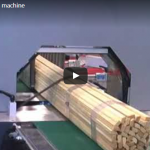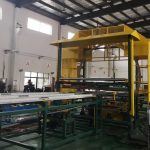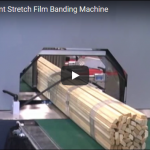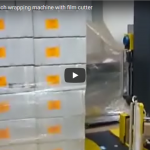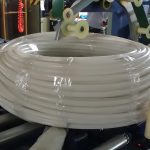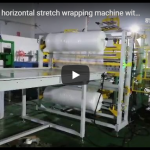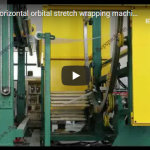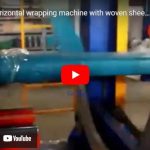A stretch film strapping machine is a type of automatic strapping machine used to secure and bundle products together using stretch film. This machine is designed to wrap stretch film around products, then apply a strapping band around the wrapped product to secure it in place.
The machine operates by first positioning the product onto the platform of the machine. The stretch film is then automatically wrapped around the product, securing it in place. Next, a strapping band is applied around the wrapped product, ensuring that it is securely bundled together.
The use of stretch film and strapping band provides several benefits, including protection against damage during transit and improved stability of the product. The stretch film also provides protection against environmental factors such as moisture and dust, ensuring that the product remains in good condition during storage and transportation.
The stretch film strapping machine is also equipped with advanced controls that allow for customization of the wrapping and strapping process. The operator can adjust the parameters of the wrapping and strapping process, including the tension of the film and strap, to achieve the desired outcome.
The machine is suitable for various industries, including food and beverage, pharmaceuticals, and logistics. It is an ideal solution for businesses that require an efficient and reliable machine that can bundle and secure products together quickly and accurately.
In conclusion, the stretch film strapping machine is an efficient and cost-effective solution for bundling and securing products together using stretch film and strapping band. Its use of advanced controls and automated operation ensures that the product is bundled and secured accurately, reducing the risk of damage during transit and improving stability.
https://www.fhopepack.com/Horizontal_wrapping_machine.html
info@fhopepack.com
